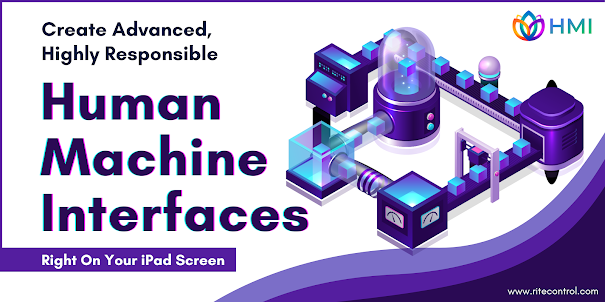Tips for Efficient and Reliable PLC HMI Programming
The dynamic world of industrial automation revolves around the seamless interplay of Programmable Logic Controllers (PLCs) and Human Machine Interfaces (HMIs). PLCs act as the brawn, executing logic and controlling real-world processes, while HMIs serve as the brains, providing operators with vital information and control interfaces. Mastering PLC HMI programming unlocks tremendous power for optimizing industrial processes, boosting productivity, and ensuring safety.
However, navigating the complexities of PLC HMI programming can be daunting. This blog post aims to empower you with practical tips and best practices to craft efficient, reliable, and maintainable code, boosting your confidence and propelling your automation journey forward.
Laying the Foundation: Planning and Organization
- Define Clear Requirements: Before diving into code, solidify your project's goals and functional needs. Documenting detailed specifications ensures your program aligns with actual objectives.
- Modularize Your Approach: Break down complex functionalities into smaller, well-defined modules. This promotes code clarity, simplifies debugging, and facilitates future expansions.
- Embrace Reusability: Identify opportunities to reuse code blocks across similar functions. This saves development time and reduces the risk of introducing errors.
- Leverage Standardized Naming Conventions: Implement consistent naming schemes for variables, functions, and comments. This enhances code readability and promotes collaboration.
Building Efficiency: Optimizing PLC HMI Interactions
- Prioritize Scan Time Optimization: Every PLC scan cycle is precious. Employ efficient coding techniques and minimize unnecessary calculations to ensure timely response to system events.
- Utilize Data Types Wisely: Select appropriate data types for variables based on their usage. This optimizes memory utilization and improves processing speed.
- Harness HMI for Efficient Data Management: Utilize HMI features like trending, historical data storage, and alarm management to reduce PLC workload and optimize data visualization.
- Consider Cloud-Based Solutions: Explore cloud-based HMI platforms to enable remote monitoring, data analysis, and collaboration, enhancing operational flexibility.
Ensuring Reliability: Fortifying Your Code
- Implement Robust Error Handling: Develop robust error handling routines to capture and log issues, gracefully recover from unexpected situations, and prevent system crashes.
- Embrace Defensive Programming: Anticipate potential errors and incorporate code checks to avoid unexpected behavior. This includes boundary checks, data validation, and null checks.
- Rigorous Testing and Verification: Thoroughly test your program under various operational scenarios, simulate edge cases, and involve stakeholders in verification to ensure real-world functionality.
- Embrace Version Control: Utilize version control systems to track code changes, revert to previous versions if needed, and facilitate collaboration.
Empowering Collaboration: Tools and Resources
- Invest in Quality Development Tools: Equip yourself with software designed explicitly for PLC HMI programming. These tools offer syntax highlighting, debugging features, and code completion, speeding up development and ensuring accuracy.
- Explore HMI Editor App: Enhance your HMI development experience with Rite Control LLC's HMI Editor App, available on the App Store. This intuitive tool lets you create high-quality HMI graphics, manage tags and alarms, and test your designs interactively, streamlining the development process.
- Seek Community Support: Engage with online communities and forums dedicated to PLC HMI programming. Share your questions, learn from others' experiences, and stay updated with industry trends.
Embrace Continuous Learning
The world of automation is constantly evolving. Stay ahead of the curve by participating in training programs, attending industry conferences, and exploring new technologies like artificial intelligence and the Industrial Internet of Things (IIoT).
Rite Control LLC: Your Partner in Automation Success
At Rite Control LLC, we understand the challenges and opportunities of PLC HMI programming. We offer a comprehensive suite of automation solutions, including HMI development tools, training programs, and expert support. Let us partner with you on your automation journey to achieve operational excellence and unlock new possibilities.
Remember, efficient and reliable PLC HMI programming is a journey, not a destination. By embracing these tips, leveraging innovative tools like the HMI Editor App, and seeking continuous learning, you can create robust, adaptable automation systems that propel your industrial operations to new heights.

.png)


Comments
Post a Comment